After going through more than 78,000 photographs from over 4,700 photographers, the expert judges of the World Press Photo contest have announced the finalists of the 2019 competition.
The panelists have selected 43 photographers from 23 countries to represent the best in photojournalism.
As always, all of the nominees give their all to bring important stories to light. Often placing themselves in harm’s way, these photojournalists operate at the highest level in their profession, proving why their services are vital sources of information.
World Press Photo has been kind enough to let us feature some of the best images.
Victims of an Alleged Gas Attack Receive Treatment in Eastern Ghouta
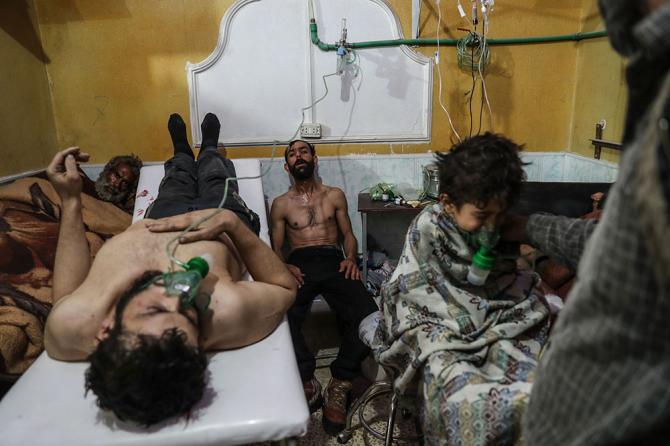
A man and a child receive treatment after the suspected gas attack on al-Shifunieh, 25 February 2018. By February 2018, the people of Eastern Ghouta, a suburban district outside Damascus and one of the last rebel enclaves in the ongoing Syrian conflict, had been under siege by government forces for five years. During the final offensive, Eastern Ghouta came under rocket fire and air bombardment, including at least one alleged gas attack -- on the village of al-Shifunieh, on February 25, 2018. Photograph: Mohammed Badra/European Pressphoto Agency
The Disappearance of Jamal Kashoggi
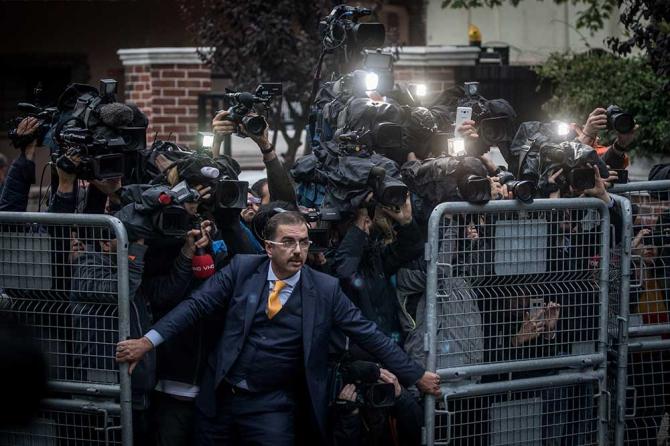
An unidentified man tries to hold back the press on October 15, as Saudi investigators arrive at the Saudi Arabian Consulate in Istanbul, Turkey, amid a growing international backlash to the disappearance of journalist Jamal Khashoggi. Photograph: Chris McGrath/Getty Images
Crying Girl on the Border
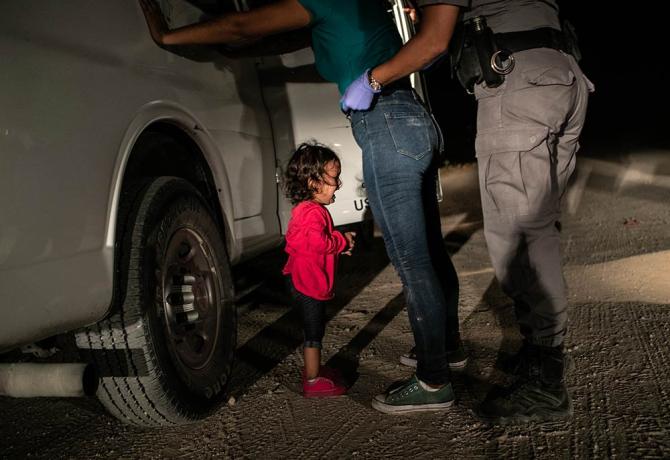
Yana, from Honduras, cries as her mother Sandra Sanchez is searched by a US Border Patrol agent, in McAllen, Texas, USA, on June 12. Immigrant families had rafted across the Rio Grande from Mexico and were detained by the authorities. Yana (who was approaching her second birthday) and her mother had been part of a refugee caravan that started its journey in southern Mexico in April. On April 6, the US Attorney General Jeff Sessions had announced a ‘zero tolerance’ immigration policy, stating that people caught entering the US illegally would be criminally prosecuted. Soon afterwards, news outlets began to report that parents who had been apprehended were being separated from their children. Photograph: John Moore/Getty Images
Akashinga - the Brave Ones
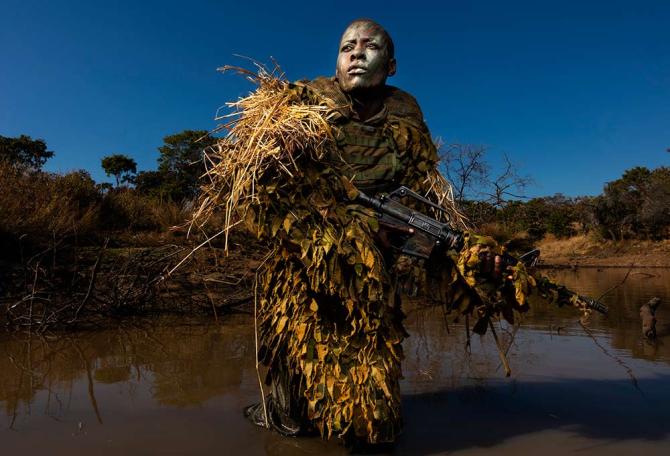
Petronella Chigumbura, 30, a member of an all-female anti-poaching unit called Akashinga, participates in stealth and concealment training in the Phundundu Wildlife Park, Zimbabwe. Akashinga (‘The Brave Ones’) is a ranger force established as an alternative conservation model. It aims to work with, rather than against local populations, for the long-term benefits of their communities and the environment. Akashinga comprises women from disadvantaged backgrounds, empowering them, offering jobs, and helping local people to benefit directly from the preservation of wildlife. Photograph: Brent Stirton/Getty Images
Shields Strikes Back

Olympic champion Claressa Shields (right) meets Hanna Gabriels in a boxing match at the Masonic Temple in Detroit, Michigan, USA, on June 22. Shields suffered a second-round knock down by Gabriels -- the first in her career -- but went on to win the match by unanimous decision. Shields is the first American woman to win an Olympic gold medal in boxing, and the first (male or female) to win a gold back-to-back in successive Olympic Games. She has had only one loss in her career, against British World Champion Savannah Marshal, in 2012. Photograph: Terrell Groggins
Being Pregnant After FARC Child-Bearing Ban
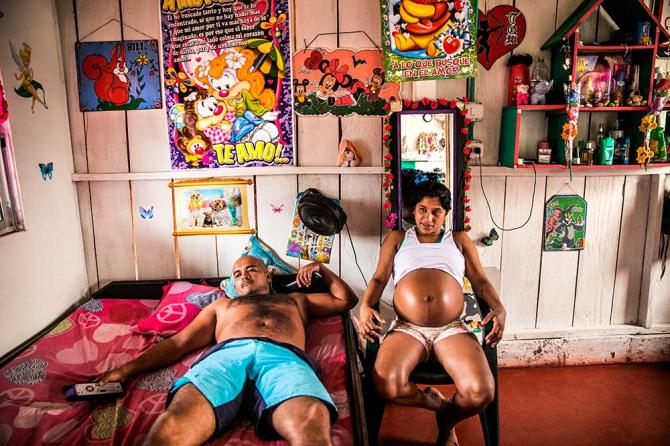
Yorladis is pregnant for the sixth time, after five other pregnancies were terminated during her FARC years. She says she managed to hide the fifth pregnancy from her commander until the sixth month by wearing loose clothes. Since the signing of a peace agreement between the Colombian government and the FARC rebel movement in 2016, there has been a baby boom among former female guerillas. Pregnancy was thought incompatible with guerrilla life. Women were obliged to put war before children, leaving babies with relatives or, some say, undergoing forced abortions -- a charge FARC denies. Photograph: Catalina Martin-Chico/Panos
Yemen Crisis

Taif Fares gasps for air in the intensive-care unit at al-Sadaqa hospital, Aden, on May 21. She had a heart disorder and required constant care. Supplies of oxygen and medicine to the hospital had been discontinued, and, on May 14, a violent confrontation between a member of the militia controlling the hospital and a doctor had led to doctors going on strike. Taif died a few days after the photograph was taken. After nearly four years of conflict in Yemen, at least 8.4 million people are at risk of starvation and 22 million people -- 75 per cent of the population -- are in need of humanitarian assistance, according to the UN. Photograph: Lorenzo Tugnoli, Contrasto, for The Washington Post
Afghan Refugees Waiting to Cross the Iranian Border
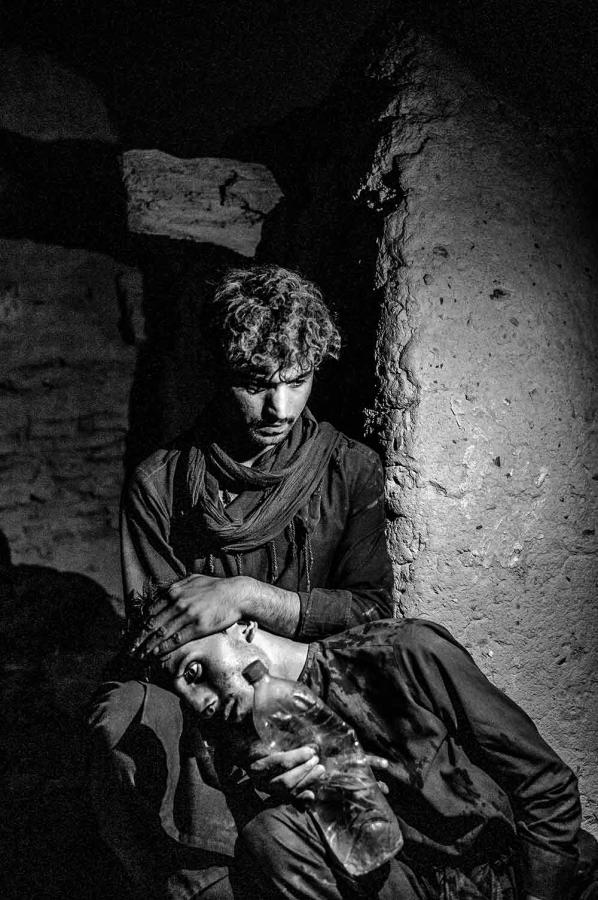
An Afghan refugee comforts his companion while waiting for transport across the eastern border of Iran, on July 27. UNHCR reports that Iran has almost one million registered refugees, the vast majority from Afghanistan. In addition, more than 1.5 million undocumented Afghans are estimated to be present in the country. Many people fleeing violence, insecurity and poverty in Afghanistan find no alternative but to use illegal traffickers, along routes where they are exposed to robbery, kidnapping and death. Photograph: Enayat Asadi
The Migrant Caravan
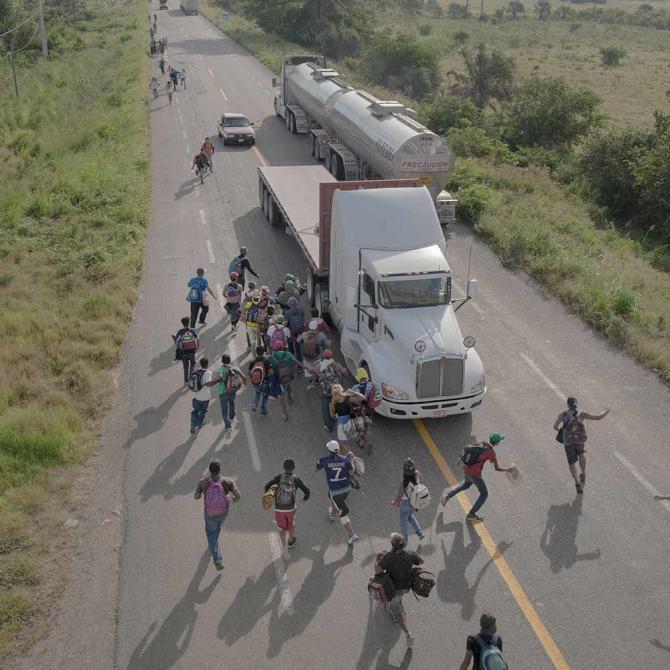
People run to a truck that has stopped to give them a ride, outside Tapanatepec, Mexico, on October30 2018. Some drivers charged to give travellers a lift for part of the way, but most offered services free as a sign of support. During October and November 2018, thousands of Central American refugees joined a caravan heading to the United States border. They were a mix of those facing political repression and violence, and those fleeing harsh economic conditions in the hope of a better life. Photograph: Pieter Ten Hoopen/Agence Vu/Civilian Act
Living Among What's Left Behind
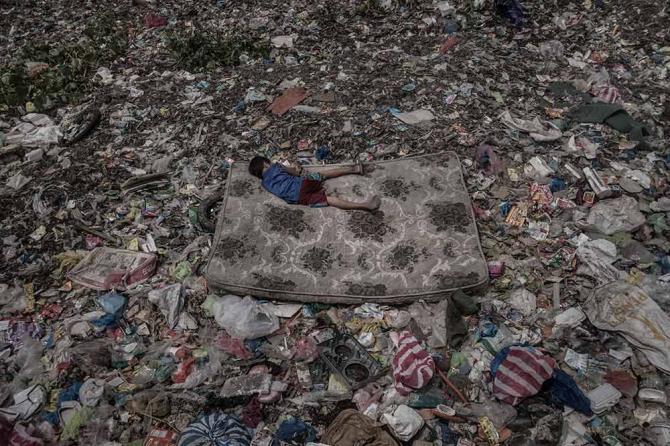
A child who collects recyclable material lies on a mattress surrounded by garbage floating on the Pasig River, in Manila, Philippines. The Pasig River was declared biologically dead in the 1990s, due to a combination of industrial pollution and waste being dumped by nearby communities living without adequate sanitation infrastructure. Photograph: Mário Cruz
Unilateral
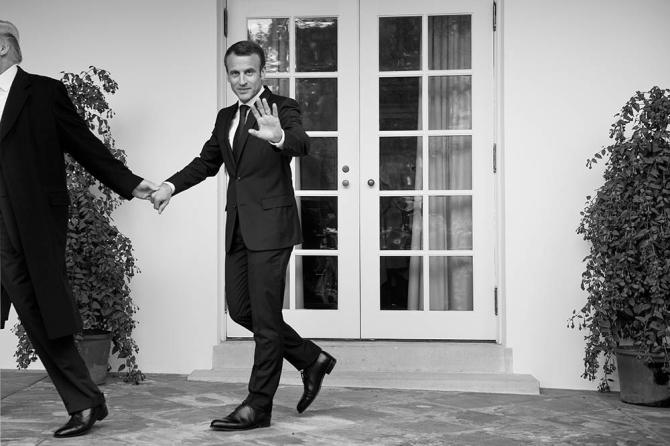
US President Donald Trump leads France’s President Emmanuel Macron by the hand while walking to the Oval Office of the White House, in Washington DC, on April 24 2018. Photograph: Brendan Smialowski/Agence France-Presse
A Fight for Democracy
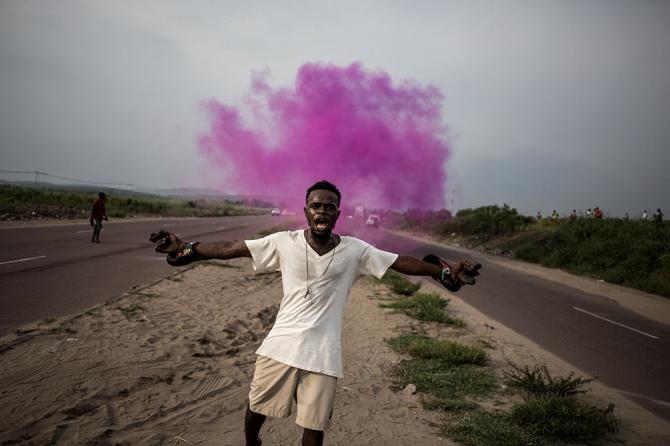
A supporter of Martin Fayulu, leader of an opposition party, runs from police tear gas in Kinshasa, on December 19 2018. Long-delayed general elections to find a successor to president Joseph Kabila in the Democratic Republic of Congo, were finally held on December 30. The run-up was marked by protests, street rallies and clashes between opposition supporters and police. Photograph:John Wessels/Agence France-Presse
Flamingo Socks
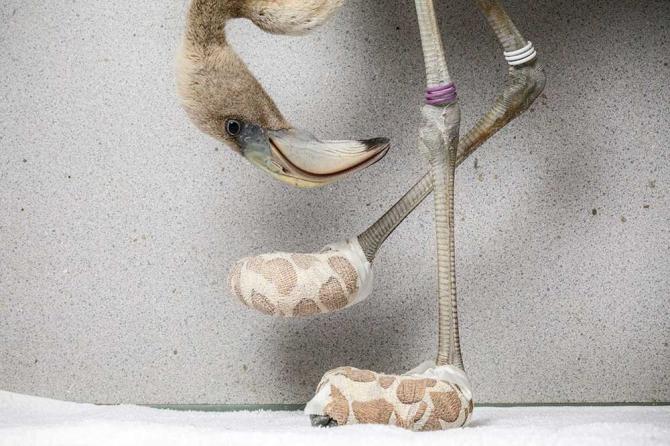
A Caribbean flamingo inspects the improvised socks created to help heal its severe foot lesions, at the Fundashon Dier en Onderwijs Cariben, Curaçao. The bird was brought by plane from neighbouring island Bonaire, after spending a few weeks in a local rehabilitation facility. Such lesions are common among captive flamingos, as they have very sensitive feet and are used to walking on soft ground. Photograph: Jasper Doest
Wild Pumas of Patagonia
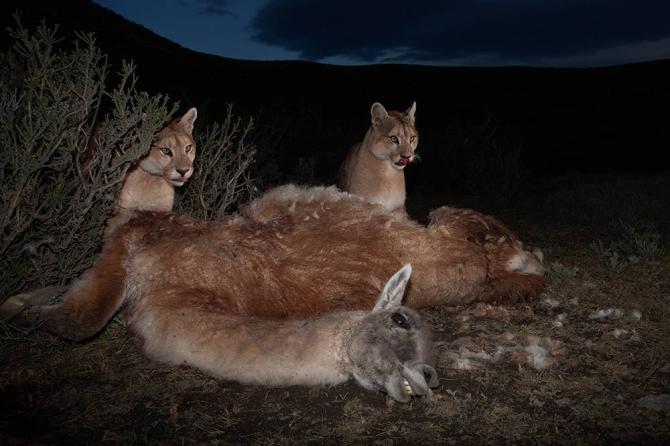
Year-old puma cubs feed from the carcass of an adult guanaco, killed the night before. Pumas, also known as mountain lions or cougars, are found from the Canadian Yukon to the southern Andes, the widest range of any large wild mammal in the Western Hemisphere. They can survive in a variety of habitats, from deserts and prairies to forests and snowy mountains, but are generally shy and elusive to humans. Torres del Paine National Park in Chilean Patagonia is thought to contain higher concentrations of pumas than anywhere else in the world. Photograph: Ingo Arndt/National Geographic
Almajiri Boy
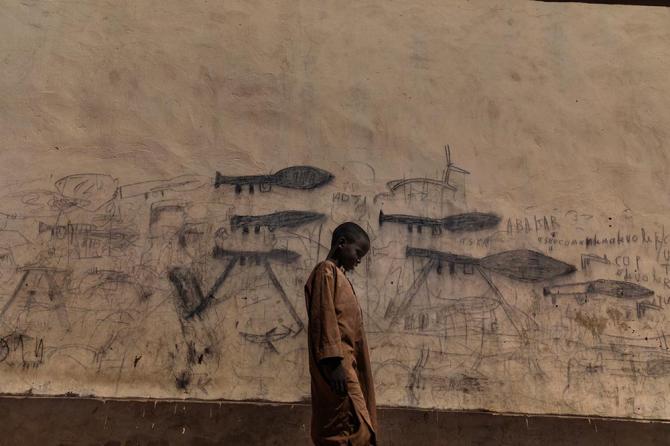
An orphaned boy walks past a wall with drawings depicting rocket-propelled grenade launchers, in Bol, Chad. A humanitarian crisis is underway in the Chad Basin, caused by a complex combination of political conflict and environmental factors. Lake Chad -- once one of Africa’s largest lakes and a lifeline to 40 million people -- is experiencing massive desertification. As a result of unplanned irrigation, extended drought, deforestation and resource mismanagement, the size of the lake has decreased by 90 percent over the past 60 years. Photograph: Marco Gualazzini/Contrasto



























